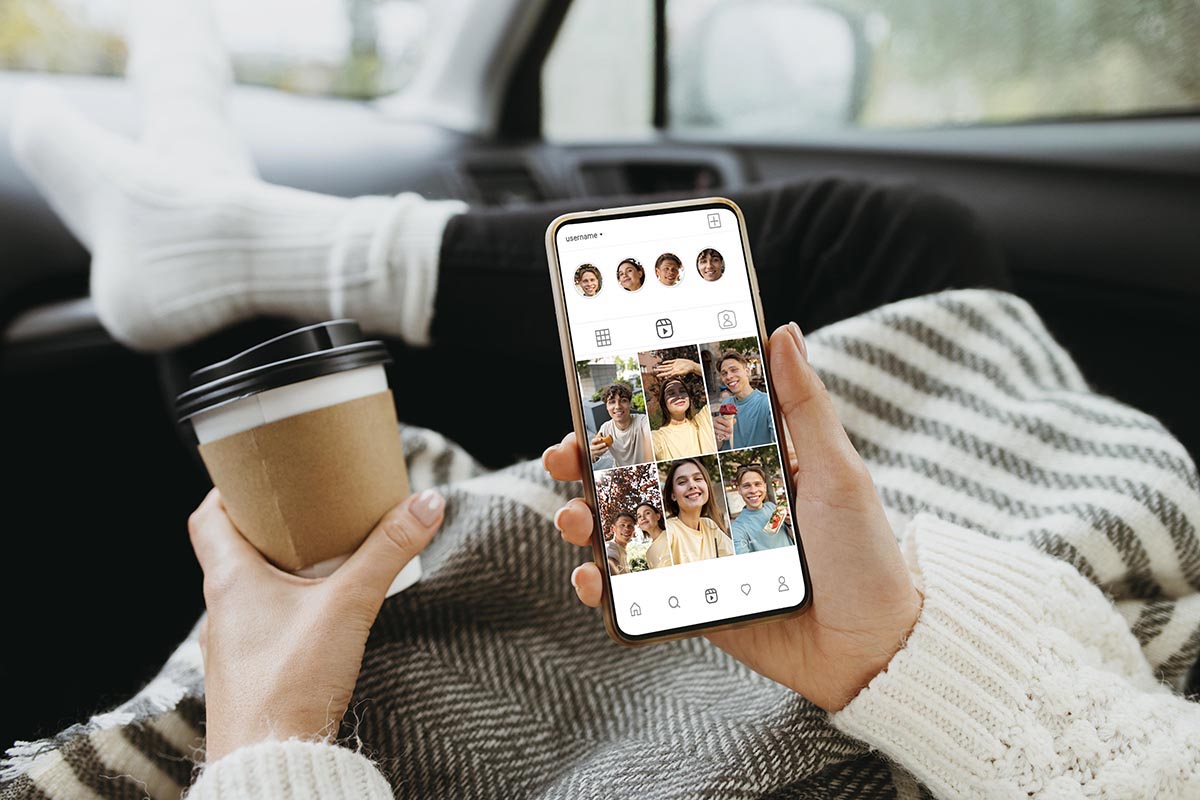Digital Marketing Trends 2026
Key Points
- Consumers expect hyper-personalized experiences, and brands must adapt to meet these rising expectations.
- Customer relations and seamless communication will be key drivers of brand loyalty and business success.
- Voice search will continue to dominate, and marketers who optimize their content accordingly will stay ahead of the competition.
It might seem hard to believe, but we’re already deep into 2025.
This year has been a rollercoaster, shaped by the aftermath of the U.S. elections, the rapid rise of AI reshaping industries, and unexpected downturns for major companies like Tesla.
These shifts have sent ripples through the economy, forcing businesses to rethink their strategies and adapt to a rapidly changing landscape.
But as always, marketing never stands still.
It evolves alongside societal and technological changes, reacting to how we live, work, and consume.
Over the past year, brands have had to embrace AI-driven content, immersive digital experiences, and new audience behaviors in an era of heightened automation and personalization.
Now, let’s take it a step further.
Even though we’re still in 2025, it’s time to look ahead.
What trends will shape marketing in 2026?
Which innovations will dominate, and how will brands need to adapt to stay ahead of the curve?
Here are the top five marketing trends set to define the next wave of digital transformation in 2026.
The Future of Content: Blurring the Lines Between Web Development and Storytelling

Visual elements have become increasingly important in marketing and digital media over the years.
In today’s digital landscape, content is no longer just about well-written articles or eye-catching images—it’s about creating an immersive experience.
As technology advances, the boundaries between content, web development, and user interaction are fading, giving rise to more dynamic and engaging experiences.
Consumers are no longer satisfied with static blog posts or simple visuals.
They expect interactive, responsive, and visually compelling experiences that feel seamless across all devices.
This shift has led to the increased integration of web development into content strategy, allowing brands to engage audiences in new, innovative ways.
Why Web Development and Content Must Work Together
The challenge for brands today isn’t just about producing great content—it’s about making that content stand out in a world where digital experiences are more sophisticated than ever.
- Interactive storytelling: Brands are incorporating dynamic elements like scroll-triggered animations, parallax effects, and interactive infographics to engage users.
- Seamless user experiences: Advanced development tools enable content to adapt in real time, offering personalization and responsive design that enhances readability and engagement.
- Multimedia-rich environments: Text, visuals, motion graphics, and interactive elements must be strategically combined to create high-impact, memorable experiences.
What’s Next? The Evolution of Content Experiences
With the bar for digital content constantly rising, brands will need to push creative boundaries even further. Expect to see:
✅ AI-driven personalization – Content that dynamically adapts to user behavior and preferences.
✅ Augmented reality (AR) & 3D elements – Bringing products and stories to life through interactive environments.
✅ Code-driven storytelling – Integrating elements like gamification, real-time simulations, and user-driven narratives.
As we move forward, the fusion of content and web development will no longer be optional—it will be essential.
To captivate modern audiences, brands must focus on delivering interactive, effortless, and visually striking content experiences that keep users engaged and coming back for more.
The Rise of Programmatic Advertising: AI-Powered Precision in Marketing
As businesses look to optimize their marketing budgets and maximize efficiency, automation has become a game-changer in 2026.
With artificial intelligence (AI) handling repetitive and data-driven tasks, marketing professionals can now focus on strategy, creativity, and audience engagement rather than time-consuming manual processes.
One of the most impactful areas of AI-driven automation?
What Is Programmatic Advertising and Why Does It Matter?
Programmatic advertising is revolutionizing the way brands buy and place digital ads.
Instead of relying on traditional, manual ad buying, AI-powered systems automatically purchase, place, and optimize ad campaigns in real-time.
- Smarter audience targeting – AI can analyze massive datasets and determine the most relevant audiences, ensuring that every ad reaches the right person at the right time.
- Real-time bidding (RTB) optimization – Programmatic systems adjust bidding strategies dynamically, helping brands win ad placements efficiently while staying within budget.
- Data-driven decision-making – AI continuously monitors performance, adjusts bids, and reallocates spending to ensure maximum ROI with minimal waste.
The Future of AI-Driven Advertising in 2026
As AI continues to evolve, expect programmatic advertising to become even more advanced. Some key innovations on the horizon include:
✅ Hyper-personalized ad experiences – AI will tailor ad content dynamically based on user preferences, browsing behavior, and real-time interactions.
✅ Voice search & AI-powered ad placement – With voice assistants on the rise, AI will refine ad targeting for voice search users.
✅ Cookieless targeting solutions – As third-party cookies phase out, AI will leverage first-party data and contextual targeting to keep ads relevant.
Why Marketers Must Adapt Now
Programmatic advertising isn’t just an efficiency tool—it’s a necessity for staying competitive in an increasingly data-driven world.
Brands that embrace AI-driven automation will benefit from faster, smarter, and more cost-effective ad campaigns, allowing them to scale their marketing efforts with precision and impact.
Virtual Meetings Are Here to Stay—And Marketing Must Adapt

Love them or hate them, virtual meetings aren’t going anywhere. While the world has long moved past the initial surge of “Zoom fatigue,” the reality is clear—remote and hybrid work models are now a permanent part of professional life.
For marketers, this shift isn’t just about workplace habits—it’s about how people interact, collaborate, and consume content.
As virtual work environments continue to shape daily routines, brands must adapt their messaging, strategy, and digital presence to align with this evolving lifestyle.
How Virtual Work Is Changing Marketing Strategies
- Shifting consumer behaviors – With more professionals spending their workdays online, their media consumption, engagement patterns, and decision-making have changed. Marketers must meet audiences where they are—on digital platforms, professional networks, and real-time collaboration tools.
- New creative & collaboration processes – The traditional brainstorming session has been replaced by virtual whiteboards, cloud-based workflows, and AI-assisted project management. Marketing teams must rethink how they collaborate, create, and launch campaigns in a digital-first world.
- Evolving brand messaging – Marketing has always been about connecting with people based on their reality. With remote work still dominating, brands must tailor their content to resonate with home-based professionals, digital entrepreneurs, and hybrid workers.
What’s Next for Marketing in a Remote-First World?
✅ Virtual-first branding – More companies will shift toward digital-first campaigns, prioritizing interactive webinars, immersive online experiences, and virtual product launches over traditional in-person events.
✅ AI-powered remote collaboration – Marketing teams will rely on AI tools for brainstorming, project management, and automated content creation to keep up with remote workflows.
✅ Stronger digital communities – With fewer in-person interactions, businesses will invest in building strong digital communities, using platforms like LinkedIn, Slack, and Discord to foster deeper engagement with audiences.
Digital Marketing Trends 2026: Ads Get Even More Personalized
Consumers respond best to marketing that feels tailor-made for them.
In fact, 90% of people say they enjoy personalized advertising—and that number is only expected to rise.
In 2026, marketers can no longer afford to ignore the power of personalization.
In the past, marketing efforts had to appeal to broad audiences simply because there was no way to personalize print ads or mass media campaigns.
Brands had to rely on general messaging that targeted the majority rather than the individual.
With the rise of digital marketing and AI-driven analytics, the game has changed completely.
Today, brands can leverage real-time consumer data, behavioral insights, and predictive algorithms to deliver hyper-personalized content, increasing both engagement and conversions.
Personalization isn’t just a trend—it’s an essential strategy for success across all platforms.
What’s Next for Personalized Advertising in 2026?
- More brands leveraging first-party data – With third-party cookies disappearing, businesses will need to build direct relationships with consumers through email sign-ups, loyalty programs, and exclusive content.
- AI-powered dynamic ads – AI will further refine personalized advertising by automatically adjusting ad content based on user behavior, ensuring that no two consumers see the same ad experience.
- Increased demand for ethical data use – As personalization grows, transparency and consumer trust will be more important than ever. Brands that prioritize ethical data collection will stand out.
The Challenge: Apple’s Data Privacy Push
While personalized ads are on the rise, Apple is making major moves to limit data tracking, restricting platforms like Facebook and Google from easily accessing user information.
With privacy updates becoming more aggressive, marketers will need to find new ways to personalize without violating consumer trust.
Will personalization continue to thrive in a privacy-first world?
Absolutely. The key will be creating value-driven, opt-in experiences where consumers willingly share their preferences.
As we head into 2026, one thing is clear: personalized advertising isn’t just the future—it’s the expectation.
Brands that embrace smart, ethical, and data-driven personalization will gain the loyalty and attention of modern consumers.
Customer-Centric Marketing in 2026: Why Consumers Matter More Than Ever

The golden rule of marketing has always been simple: understand your customers, anticipate their needs, and position your product as the solution.
But in 2026, this principle is evolving into something even more powerful—a data-driven, experience-first approach that prioritizes trust, engagement, and personalization.
Every year, customer experience ranks as a top priority for marketers, and this year is no different. What has changed, however, is the depth of knowledge brands now have about their audiences.
With more consumer data available than ever, companies can analyze real behaviors, preferences, and pain points.
We know what people went through in 2024 and 2025—what they value, what frustrates them, and how they want to be treated.
Now, brands are leveraging this insight to enhance the customer experience in deeper, more meaningful ways.
Why Superior Customer Relations Drive Business Success
Customer relations aren’t just about answering support tickets anymore—they are the backbone of brand trust, loyalty, and long-term profitability.
Businesses that invest in seamless communication, quick resolutions, and personalized engagement see higher retention rates, better conversion rates, and greater customer satisfaction.
✅ Seamless Communication Across Channels – Whether through social media, live chat, AI chatbots, or mass notifications, brands must ensure immediate and effortless interaction with customers.
✅ Trust-Building & Transparency – Consumers today expect brands to be honest, socially responsible, and responsive to their needs. Those that fail to meet these expectations risk losing trust—and business.
✅ Personalized Customer Journeys – With AI-powered insights, brands can tailor experiences, recommendations, and messaging based on real user behavior. This level of personalization will be a key differentiator in 2026.
The Impact? Studies consistently show that companies with strong customer relationships report higher profits and happier, more engaged audiences.
Investing in customer-first strategies is no longer optional—it’s essential.
Digital Marketing Trends 2026: The Rise of Voice Search
Voice search is no longer a futuristic concept—it’s here, and it’s reshaping digital marketing.
As mobile and in-home smart devices continue to dominate, the way people search for information is shifting from typing to asking.
Nearly 50% of all searches are now voice-activated, with this number expected to climb even higher in 2026.
Alexa and Siri boast a 95% accuracy rate, making voice searches more reliable and widely used than ever before.
Why This Matters for Marketers
If your website and content aren’t optimized for voice search, you’re already falling behind.
Unlike traditional typed queries, voice searches are more conversational and question-based—meaning SEO strategies need to shift toward:
- Long-tail, natural-sounding keywords – Instead of “best coffee shop Seattle,” users ask, “Where’s the best coffee shop near me?”
- Featured snippets & direct answers – Smart assistants pull answers directly from concise, structured content, favoring brands that provide clear and relevant responses.
- Local SEO optimization – With more “near me” searches happening via voice, businesses need to ensure their local listings and reviews are accurate, updated, and optimized.
✅Action Step: If you haven’t started optimizing your site and content for voice search, now is the time. As voice tech advances, brands that embrace conversational SEO and AI-driven search behavior will gain a significant advantage in digital marketing.
In 2026, marketing isn’t just about selling a product—it’s about creating an experience that feels effortless, relevant, and deeply connected to the consumer’s needs.
Those who understand this shift will lead the future of digital engagement.






















